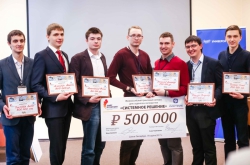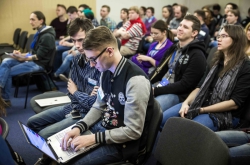The list of questions included problems of any complexity — the first task is the easiest, and the last one is the most complicated. According to the statistics made by Yandex, last year about 85% of participants solved the first task and only 10% managed to solve the 10th one. One has an hour for all the tasks, but usually participants spend about 35 minutes. In 2016, over 24,000 people from Russia and CIS countries took part in the contest. About 40% did not solve any of the problems. Those who coped with four tasks received a "satisfactory" mark, those who solved at least 9 got "excellent."
According to Olga Molodan, a representative of Yandex, people make mistakes because they are used to being in a hurry as opposed to not being smart enough. The organizers believe that one needs only basic knowledge in math — there are a lot of 10 year-old children among the participants. Even those who are weak on STEM disciplines can do that.
"The only thing you need is logic. After the contest, when I showed mistakes to the participants, I offered analytical solutions, but it is not the only way. The tasks are related to things that happen in the real life. They aim to check one’s quick-wittedness and erudition," commented Natalia Sitenko, lecturer from the Department of Advanced Mathematics.
When solving tasks, people deal with real objects rather than abstract things. For instance, the 8th question offered this year started with: "It happened in winter 2017." Masha, the birthday girl, realized that her age is equal to the sum of numbers comprising the year when she was born. What is the maximum age of Masha?" According to Natalia Sitenko, it’s possible to solve this question using a mathematical equation or substitute various numbers. One could start with 1999. The sum of 1,9,9 and 9 is 28. It is a wrong answer because in this case Masha would be 18 years old. Then one could check "1998" and move further until you find the correct answer.
In question 7, participants could also use math equations, mental arithmetic or draw a diagram. According to the task, Ivan organizes a hackathon. He rents a hall that has five sockets and 21 power strips with three sockets in which one. What is the maximum number of laptops the participants can plug in taking into account that one can connect the power strips to each other?
The first and the easiest task can be solved in a minute: Lyosha folded a ribbon in half and cut it in twice. How many pieces did he end up with?
In 2017, over 40 people came to ITMO, which is a partner of the contest, to take part. Apart from children and adults who came to the university, participants also did it online. The results were published on the Yandex website, those who solved offline were shown the correct answers after the contest.




